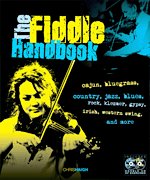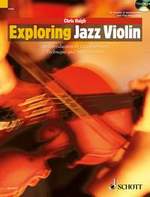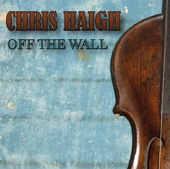
MENU TO FIDDLE STYLES:
PLAYING FIDDLE FOR DANCING
When you begin playing the fiddle, your mission is to master the basics of the instrument, to learn a repertoire, and develop an appropriates style complete with bowing patterns, ornamentation and other stylistic inflections. Surely that’s enough to be going on with? However, you should be aware that the context in which you are playing is important, and should to some extent determine how you play. Fiddling for a contest, for a recording, for a concert performance or for a dance are all very different things, requiring a different approach and a different body of background knowledge. In this article I will look at playing for dancing, and some of the things it is worth knowing in order to make the best of it, both for you and for the dancers.
Almost all fiddle music was once designed solely for dancing, The idea of playing for listening- either at a concert or on a recording, is a recent one, as is the idea of playing in a session purely for pleasure. Within the last century the link between dance and live music has been weakened. In many dance contexts, recorded music is now the preferred format, either for financial reasons, or because it is easier to achieve exactly what is required by using something pre prepared. From the fiddler’s point of view, this divorce allows a greater degree of freedom to explore different aspects of technique, variation and expression which are not possible within the confines of dance accompaniment. Nevertheless, fiddling is in some ways impoverished when it loses its original function, and it is often valuable to understand why certain tunes or types of tune reached their present form because of dance.
CEILI DANCING
Ceili is an Irish Gaelic word for a social gathering for dance and music; the Scottish (and usually English) spelling is ceilidh. The idea first gained prominence in Ireland at the end of the 19thC when the Gaelic League (an organization formed to promote Gaelic culture) began to organize dances. Set dancing, although popular, was viewed as being an English import, and so new dances such as the Walls of Limerick, Siege of Ennis, Sweets of May, the Bridge of Athlone, Waves of Torrey and the Haymaker’s Jig were introduced. Like set dancing, this was social dance for groups of people, in lines, squares, circles and four-couple sets.
Probably the first band formed to specialise in playing for these dances was the Kilfenora Ceili Band in County Clare- still going strong today. Clare is a particular stronghold of Ceili playing, being home also to the Kilfenora’s chief rival, The Tulla Ceili Band, and many others. One feature of the early ceili bands was their numbers. Whilst most dancing had been done to solo fiddle or pipes, the ceili bands often had accordion, piano, drums, along with several fiddles, flutes piccolos or whistles. The notorious Public Dance Halls Act of 1935 put an end to informal dancing, and people were henceforth expected to dance in halls specially built by the Parish Church, with profits shared by Church and State. Though a disaster for traditional music in general, it was a boon for the ceili bands. In an era before amplification, these larger halls required the volume that only a full sized ceili band could provide.
Ceili bands of necessity were disciplined and organised. Strict tempo and tight unison playing was important, whilst ornamentation, variation and improvisation- regarded by many as the areas where most of the artistry of the music resided-were largely redundant. The presence of tempered instruments such as accordion and/or piano also ruled out any “traditional” intonation from the fiddles. Ceili dances were very popular, though not with everyone. Seán O’Riada (1931-71) was a highly influential figure in the 1960’s, striving for the first time to have traditional music treated as an art form; his group Ceoltóirí Chualann dressed in black tie and played arrangements of traditional music in concert halls. This was a direct fore-runner of The Chieftains, arguable the most successful Irish Folk group ever. To O’Riada ceili music was an abomination, its sound akin to that of “a bluebottle in a jam jar.”
Playing in a Ceili band today
Today Ceili bands are still popular. The old bands such as the Kilfenora still play in much the same style as ever, but ceili playing in general is a little more relaxed and less formal. With the advent of amplification, large line-ups are no longer a necessity, so size and instrumentation are much more variable. Ceilis are a good way for many traditional musicians to make some regular money, particularly at weddings. In Ireland people will often know all the steps to the dances, but elsewhere, in England, for example, there is usually a caller with the band to explain the moves.
The caller chooses the dances; the band then has to select a suitable set of tunes; 32 bar jigs, 40 bar reels and so on. It is not just the length that is important; the feel and phrasing of the tune should also to some extent match the phrasing of the dance. If there’s any debate about tempo for any of the tunes, always defer to the caller; he or she knows what works for the dancers, and it’s not necessarily the same as you would play the tunes in a session. The dancing is far less complicated than for step or set dancing, and mixed or crooked tune sets are rarely called for. Nevertheless, it is important for the band leader to give a clear introduction, to call out when the tune changes, and give warning of the final time round. Talking while playing- an art in itself!
You should also be aware of what is happening on the dance floor; often the dancers will not keep in step with the music, and there may be a sudden need for an extra 8 bars in order to let them catch up. Some dances have clapping sections; ideally you will have tunes where this rhythm falls naturally into the melody (polkas work well for this), and it may well be appropriate to modify the tune on the spot to incorporate the “clap clap clap” rhythm. In playing for ceili, a fiddler should aim for a clear melody, a strong bouncy rhythm, and careful attention to tempo. The modern practice in Irish fiddling of constantly varying the bowing, and moving the emphasis around on different phrases, is not ideal for ceili; a strong, even rhythm on the downbeat is what you should aim for. If you’re the only melody player, some ornamentation and variation will be welcome. If there are several others, best to keep it straight down the line. Bands often use sheet music rather than playing by ear. Whilst being against the general ethos of traditional music, this helps to keep the music disciplined, avoids the need for the question “what’s the next tune?”, and enables guest or “deputy” musicians to fill in for any regular member of the band. Whilst any decent musician can play in a ceili band, having your own “pad” (the book of music), knowing which tunes belong with which dances, being able to lead confidently into a tune, and having some knowledge of the dancing- these are all valuable assets which can make you a potential band leader in your own right.
SCOTTISH DANCE
Scotland also has a well established dance scene, dating back hundreds of years. Fiddlers such as Niel Gow in the 18thC were able to make a living playing at balls for aristocrats such as the Duke of Atholl. Unlike in Ireland at that time, there would often be a three or four piece band, with second fiddle and cello in the line up. Many of the tunes and dances were published at the time, and remain part of the repertoire today. Scottish Country Dancing today has two branches. The more formal is the descendent of those 18thC balls; dancers often attend classes, learning fancy footwork and complex dance sequences, and will appear correctly attired in kilts, gowns and so on. Such dances follow rules set down by the RSCDS (Royal Scottish Country Dance Society), and are still often associated with the upper classes and the military. There will be no caller at such events, since all are expected to know the steps in advance. Formal Scottish dancing can be demanding for the band. Because no caller is required, one dance may run straight into the next, so that the musicians don’t get ten minutes between each dance while the steps are explained. No chance of making it to the bar or slipping outside for a crafty smoke! There’s also the problem that the dancers are likely to know as much if not more than you about “the correct way” to do things. Each dance may have a special tune to go with it, and the dancers will know the correct tempo, length and rhythm required.If you’re a bit of a chancer like me, a Scottish dance is one of the places you’ll be found out!
Scottish Ceilidh is the more informal version, where a caller is more likely, and there will be more modern dances such as waltzes mixed in with the traditional ones. Playing for Scottish dancing is a little different from its Irish counterpart. There are a great number of reels (dancers will often refer to their pastime as “reeling”), plus a number of strathspeys. Some dances require mixed sets of tunes. The Gay Gordons, for example, may use Scotland the Brave (a march) alternating with Cock of the North (a jig). Most dances are in 32 bar sections, but The Eightsome Reel requires 40 bars, followed by 8x32 bars, followed by another 40 bars. Daydreaming is not recommended! Other standard dances include the Reel of the 51st, Dashing White Sergeant, the Duke of Perth, and Strip the Willow. Tunes are often played once only at a time, so a set of four tunes may be needed for each dance. An excellent reference point for style, tempo and repertoire is the recordings of bandleader Jimmy Shand, though you will find the fiddle well down in the mix, kept well in place by drums, accordion and piano. Unlike in Irish music, a strong, almost classical tone with plenty of vibrato is appropriate.
ENGLISH COUNTRY DANCE
Country dancing in England has a very long tradition, dating back to Elizabethan times. The queen greatly enjoyed dancing, not just of the continental courtly variety, but also that of her common folk. A contemporary account from one of her royal progresses round the country states that
"Her Majesty that Saturday night was lodgid again in the Castell of Warwick, where she rested all Sonday, where it pleased her to have the country people, resorting to see her, daunce in the court of the Castell, her Majestie beholding them out of the chamber window, which thing, as it pleased well the country people, so it seemed her Majesty was much delighted, and made very myrry."
The first published collection of dances and tunes was by John Playford in 1651, “The English Dancing Master- Plaine and easie rules for the dancing of country dances, with the Tune to each dance”. Country dancing was immensely popular across the social spectrum, peaking in the late 18thC; part of its success probably derived from the fact that it was a way for the high and mighty to play at being country folk, and vice versa. Jane Austen and Thomas Hardy both frequently mention country dancing in their writing. Hardy was himself a fiddler it is said that that the 12-year old Thomas, one night at a dance played the New Rigged Ship continuously for 45 minutes, and had to be stopped by his hostess for fear that he would “burst a blood vessel”. By Hardy’s time in the early 19thC country dancing was in decline, threatened by new dances from the continent such as the polka, quadrille and waltz. Rapid industrialisation was depopulating the countryside and rural traditions were declining. For the best part of a century English country dancing virtually disappeared, and it was not till the turn of the 20thC that interest was revived, a product of the romantic nationalism sweeping Europe. Cecil Sharp, a music teacher and composer, happened upon a performance by the Headington Quarry Morris dancers in 1899. Morris dancing was a largely rural tradition, more ritual than social, which had made very little impact on urban or elite culture. By the time of Sharp’s chance encounter, it was virtually extinct. With the help of Mary Neal, of the Esperance Girls’ Club in London, he began a revival, both of Morris Dance and eventually English Country Dance as a whole.
Chris Leslie, as well as playing with the legendary folk rock group Fairport Convention, is fiddler with the Adderbury Morris. I asked him about the particular demands of playing for Morris dancing.
“Playing for the Adderbury dancers has taught me a lot about keeping a steady pace and getting lift into a tune, a feeling of upwards movement if you like. Following the dancers in the air to reiterate the pulse as their feet land back on the ground. I watch the stepping of one of the front dancers, keeping locked in to the rhythm, which I feel is more important than the melody. The dancers will respond to the fiddle’s pulse as well, and it is an amazing feeling when the ideal happens and the two parts of the whole are completely in sync. It becomes an effortless flow in which both musician and dancer are responding to the other."
Unlike in Ireland and Scotland, country dancing is a reinvented tradition. As such, although the EFDSS (English Folk Song and Dance Society) oversees, publishes and promotes dances, there is less formality than elsewhere in the British Isles. Country Dancing exists within the folk scene (at annual folk festivals and dance clubs; here you will expect a degree of finesse and technique), and also among the general public, at weddings and parties -where being at the wrong place at the wrong time, and frequently ending up in a heap on the floor is the order of the day. One word of warning if you’re booked for this type of event in England. The person who books you may well have NO IDEA of the difference between Irish step dance, Scottish Country dance, English folk dance, American hoe-down or Serbian Kolo dance. Is always worth asking in advance if there is theme for the dance. I’m sure my band is not the first one to have turned up to a dance in jeans and cowboy hats only to find the audience in ball gowns and kilts!
CONCLUSION
Traditional music started out mostly as the accompaniment for dance, and the two developed hand in hand over decades and centuries. As a fiddle player, it is important to understand the elements of the music which relate to aspects of dancing, such as tempo, structure and feel. When actually playing for dancing, you should recognise the specific musical demands of the particular dance style in question; when playing in another context, such as in a session or for performance, you should also be aware of the greater freedoms which this new context allows.
(This article first appeared in Fiddle On magazine)


